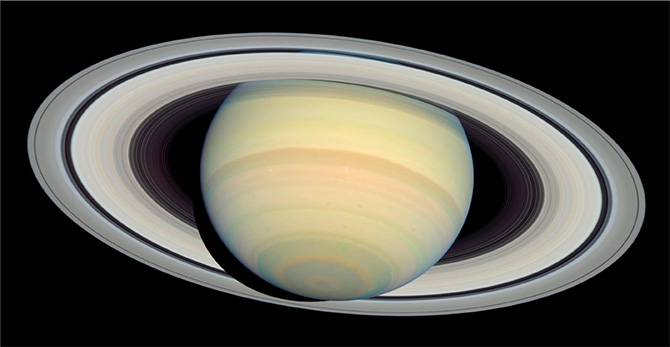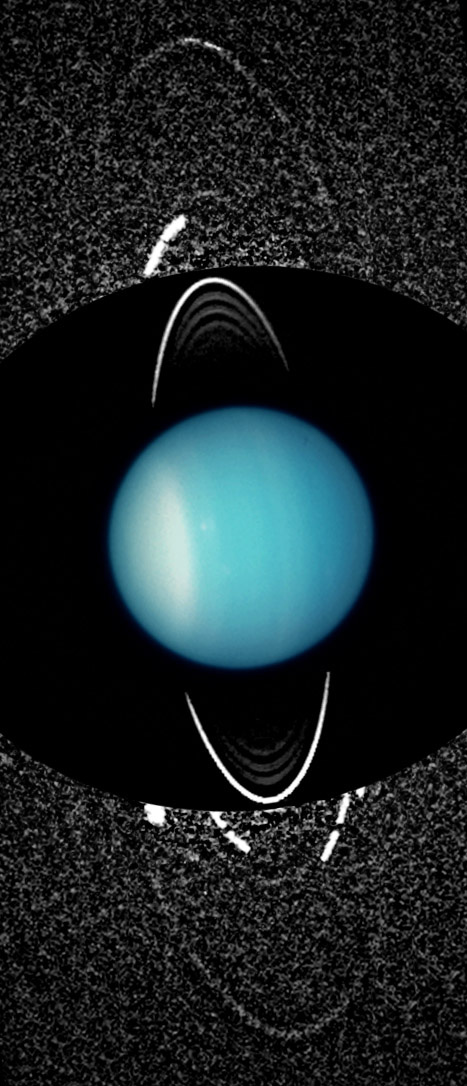.

Chariklo — affectionately dubbed a “strange little object” by one researcher — is an asteroid that orbits in a weird spot. Instead of residing in the usual locations (between Mars and Jupiter, or beyond Neptune) it resides between Saturn and Uranus. What’s more, Chariklo has its own ring system. The 2014 discovery is still baffling researchers because the only other rings we know of are around huge planets: Jupiter, Saturn, Uranus and Neptune.
After the discovery, planetary scientist Margaret Pan at the University of Toronto was curious as to how those rings came to be. Recent research she led hints at a solution. Using mathematics and observations of Chariklo, her team suggested a new way the rings could have been created for the asteroid and other space rocks (dubbed Centaurs) in its neighborhood.
Their work suggests that as Chariklo moved out of the Kuiper Belt of icy objects (beyond Neptune) towards its current orbit, the sudden heating would have caused outgassing of carbon monoxide or nitrogen gas. This process would have lifted dust particles off the surface, eventually forming the rings. This theory competes with another idea previously brought out in the literature, which is that Chariklo picked up a small moon while in the Kuiper Belt, a moon that eventually broke apart into a ring when Chariklo passed close to Neptune. Pan said the latter scenario is likely rare; only some Centaurs could get rings that way.“(Our) scenario predicts that all 100 km-class (62-mile) Centaurs should have some kind of orbiting dusty material. We’re eager for future Centaur observations to help distinguish between these formation pathways,” Pan wrote in an e-mail to Discovery News.
.

Rings are a rare phenomenon in our solar system. Saturn (pictured) has a spectacular set along with Jupiter, Uranus, Neptune and Chariklo.
NASA, ESA AND ERICH KARKOSCHKA (UNIVERSITY OF ARIZONA)
-
Why the 100-kilometer limit? Pan says that outgassing on smaller objects wouldn’t have enough mass to stop the dusty material from flying away. She adds that Kuiper Belt objects wouldn’t be expected to have these rings, because they’re too far from the sun and thus too cold to experience this outgassing. Even if a Kuiper Belt object moved close enough to a planet to split a little orbiting moon apart, the trajectory would inevitably change the asteroid into a Centaur.
Observations of Chariklo are limited so far, but astronomers have seen that it has two rings. They are wider on one side of Chariklo than the other, with the second ring only containing about one-tenth the mass of the first ring.
Pan’s team suggests that the ring is not quite circular (elliptical). The particles don’t form into a circle due to the individual gravitational interactions between particles. The research implies that for this to happen, you would need to have enough material to create a 1-km (0.62-mile) sized ice ball. A typical particle would also have to be a few meters in size.
When comparing Chariklo’s rings to other ringed bodies in the solar system, it appears most similar to Uranus despite its diminutive size.
“The geometry of Chariklo’s rings, which are fairly dense and narrow, is most like that of the Uranian rings. Interestingly, some of the Uranian rings are also noticeably elliptical, and studies of the Uranian system inspired our treatment of Chariklo’s rings,” Pan wrote.
.

Uranus and its rings, based on Hubble observations performed in 2003. Chariklo’s rings appear to be the most similar to those of Uranus.
NASA, ESA, AND M. SHOWALTER (SETI INSTITUTE)
-
Pan plans to next examine how the rings became eccentric in the first place. Some kind of perturbation must have forced them to become eccentric instead of circular, she says. She also is interested (more generally) in seeing if it’s possible to predict a ring’s eccentricity based on its mass and width.
Pan’s research, which has been accepted in the Astrophysical Journal, is available in preprint version on Arxiv.
Quelle: Discovery News.4678 Views
